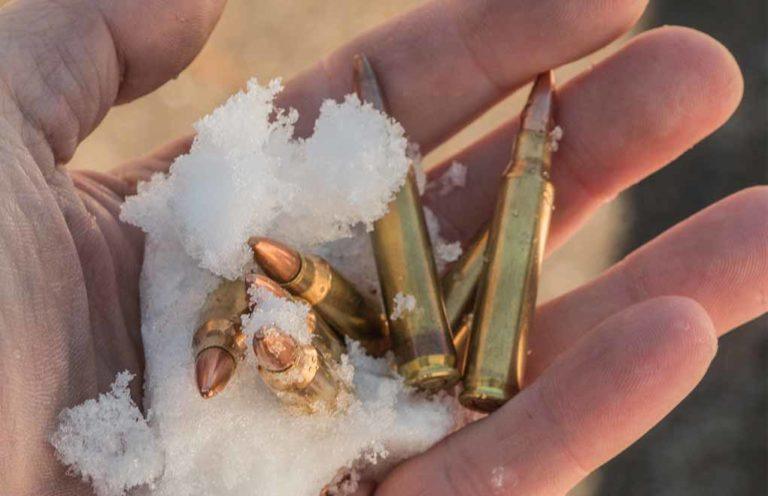
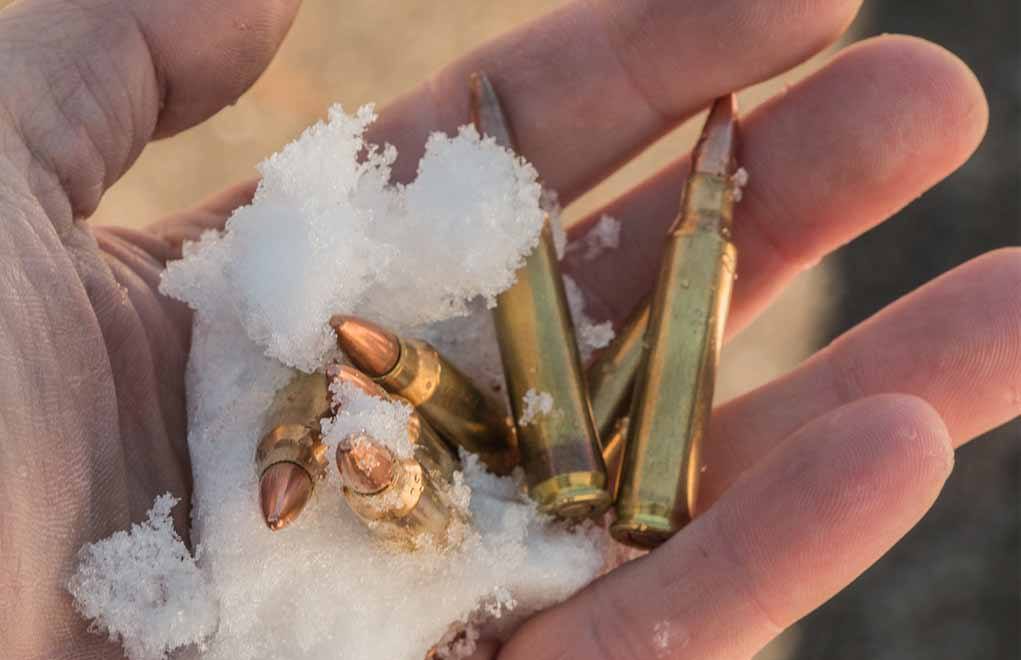
There's truth in the adage “Keep your powder dry,” especially in the days of frizzen pans and blackpowder. But in the age of metallic cartridges, what is the effect of moisture on ammunition?
How Did Moisture Affect Ammunition In The Tests:
- Short term exposure for 10 minutes or less saw no effect on performance.
- Long term exposure, 24 hours, affected most ammunition in one way or another.
- Generally, moisture effects manifested in misfires and reduced velocity.
The maxim, “Keep your powder dry,” has been attributed to Oliver Cromwell. It first appeared in an 1834 poem written by William Blacker, with the full passage being, “Put your trust in God, my boys, and keep your powder dry.” It became a common salutation with mountain men who were hardy folk, who without dry powder would not have lived long at all. Though particularly good advice to anyone relying on a firearm for survival — wet gunpowder will not burn — the adage has since morphed into advice of a more general nature, suggesting you should always be prepared to take action.
If I’ve heard it once, I’ve heard it a thousand times, and more than 20 years ago I realized first hand how important this guidance could be. I was assigned as the designated marksman for the police agency I worked for. We had secured a dozen cases of Federal Match ammunition. Being a small department, this was a major investment, and the stuff shot exceptionally well in my issue Remington 700 Police rifle. Then, it started raining, and it seemed like it would never stop. When it did stop, the water was more than a foot deep in the police department armory.

We’d stored our ammunition on the floor and it had all been submerged for more than 24 hours. The concern was that it would not go bang. This, of course, might not be all that big of a deal on the target range or while deer hunting. In a police situation, it is unacceptable. I took a case of the ammo to the range and began shooting. Surprisingly, I found that 85 percent of the ammunition worked perfectly, the other 15 would not fire.
How Much Water Can Ammo Handle?
I had not thought all that much about how water resistant that ammunition had seemed to be until last year when I left some hunting ammunition in the back of an ATV. It rained all night and the ammo became completely submerged. The next day I tested the ammo and every single round went off and hit the target. Commercial ammunition is not waterproofed by manufacturers but this got me to wondering — in a general sense — just how long ammunition can be exposed to water and still be expected to deliver 100 percent reliability. So, I conducted a test.
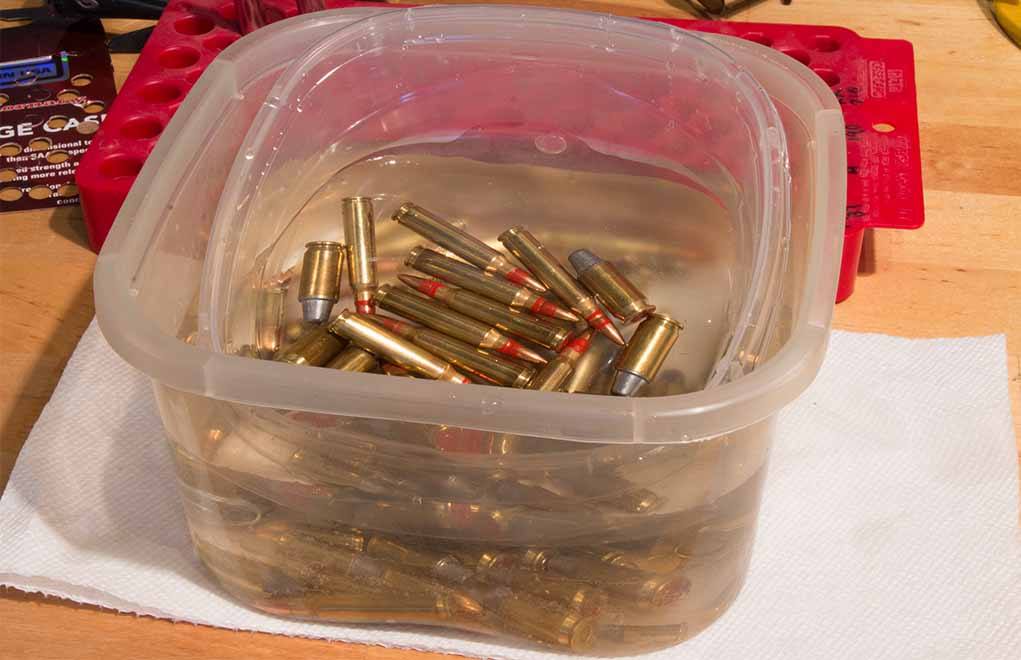
I selected five loads and submitted them to four different levels of water exposure. However, before anything got wet, I shot 10 rounds of each load over a chronograph to establish a performance standard. Then, I submerged each load in water for 10 seconds to simulate dropping a cartridge in a mud puddle or stream like you might while on the range or hunting. This had absolutely no effect on the ammo. Velocities remained constant and every cartridge fired. In the next test, I submerged the cartridges for a full 60 seconds. The results were exactly like the first test. Velocities were consistent and every round fired.
Get The Dope On Ballistics:
- Practical Overview Of 6.5 Creedmoor Ballistics
- The Effects Of Humidity On Bullet Trajectory
- The Effects Of Air Temperature On Bullet Flight
- Bullet Efficiency And Ballistic Coefficients
- Exterior Ballistics Explained
While right in the middle of this experiment we were hit with 16 inches of snow. Though after the previous water tests I figured the effort a waste, I still tossed 10 cartridges from each load into the snow for 10 minutes. This could obviously happen in real life; if you’ve every dropped some loose rounds in snow, you know how long it can take to find them all. The results, as expected at this point, were just like the two previous water tests: The snow had no effect on the ammunition.
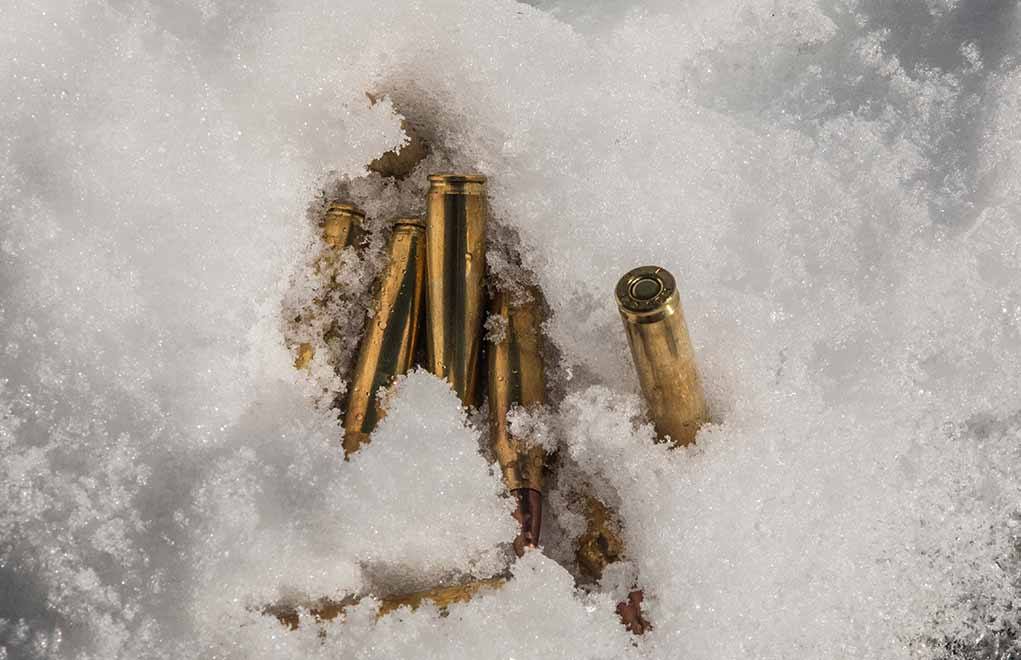
Though short of a flood or total incompetence on your part, having your ammunition submerged for a full day is very unlikely. Still, I wanted to test the long-term water-resistance of the ammunition, so submerged 10 rounds of each load for 24 hours. That’s when things started getting interesting.
Only two of the loads — the Black Hills 45 Auto load and the Federal 9mm load — delivered 100 percent reliability. The Remington .223 load had one misfire out of 10, and my 45 Auto handloads were also 90 percent reliable. The load that was most affected by the water was the Federal 22 LR load; out of 10 rounds, only one fired, and the velocity was 13 percent slower.
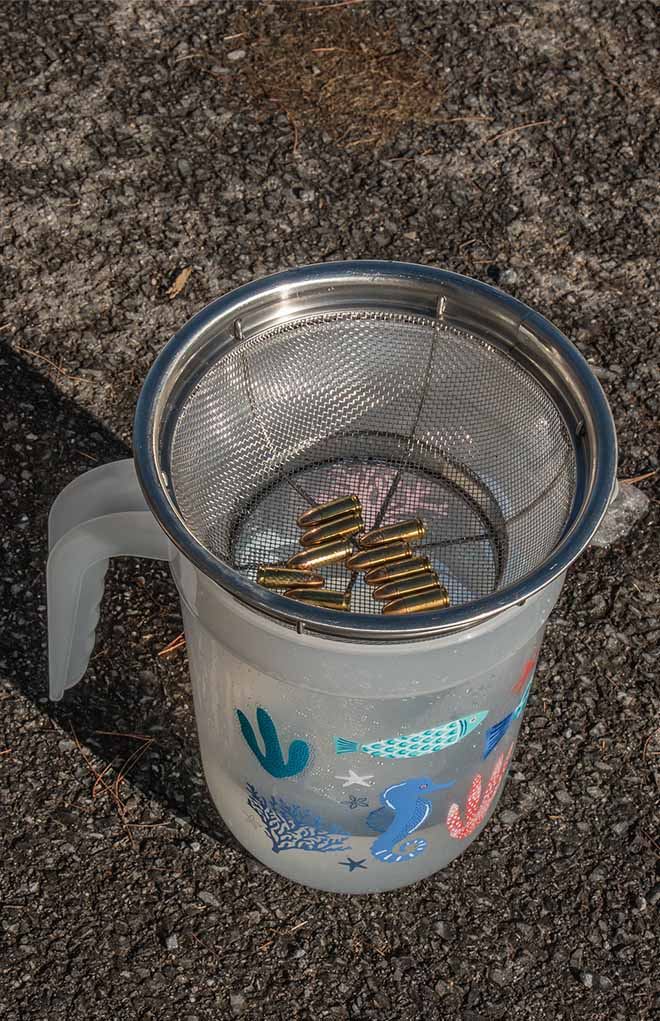
Interestingly, the velocities for my handloads seemed to be even more affected; they were 15 percent slower. We can assume that in the case — no pun intended — of these cartridges, the water might have contaminated some of the power.
Homemade Water Resistance
This got me to thinking. I’ve been told numerous times you can waterproof your ammo by sealing the primer and bullet with fingernail polish. It sounded logical and I’d just assumed it would work. Since I was right in the middle of a wet mess, I figured I might as well test that, too. I sealed the bullet and primer of 10 of the Remington .223 cartridges and 10 of my 45 Auto handloads. I let the polish dry for 24 hours and then submerged the rounds in water for 24 hours.
Granted, a 10-round test in any of these experiments is not a very large sample. However, I was not looking for definitive answers — I was looking for indicators of how water would or could negatively impact the performance of ammunition.
In the fingernail polish sealing test, 100 percent of the .223 Remington rounds fired, but only eight out of 10 of my handloads fired. For all practical purposes, the velocity of the sealed .223 Remington rounds was identical to the unsealed rounds, which had also been submerged for 24 hours. However, my sealed handloads had and average velocity identical to those that never saw water. Still, I’m going to go out on a limb and say you’re wasting your time trying to seal ammunition with fingernail polish. With both loads, the overall reliability percentage was the same — 18 out of 20 unsealed, and 18 out of 20 sealed.
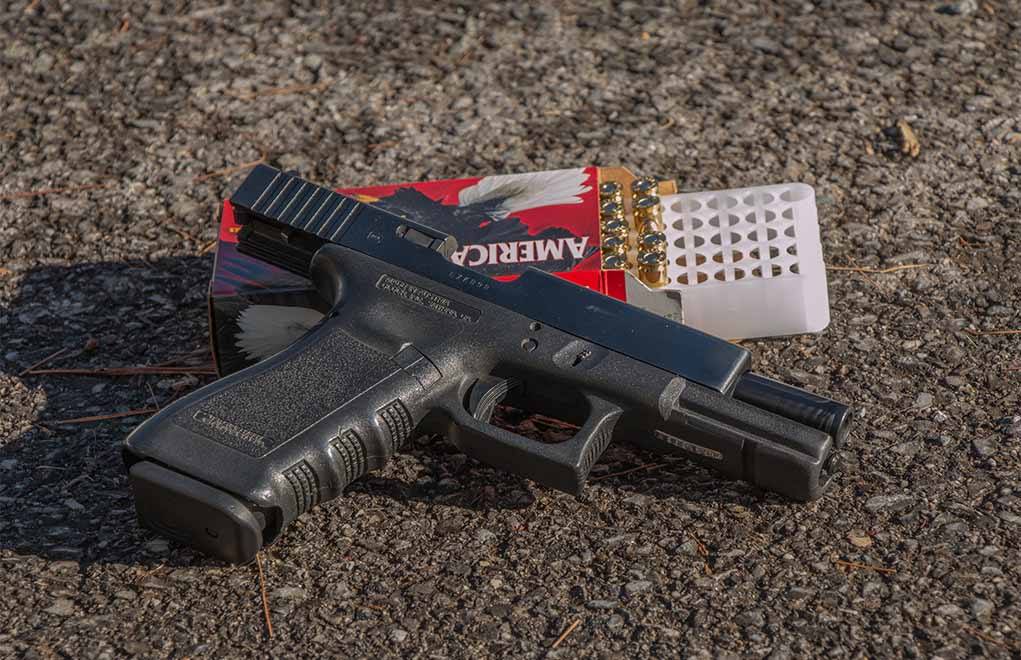
Military ammunition is about the only “sealed” ammunition and it is subjected to rigorous testing. According to Mike Lake at Nosler, “The requirements generally involve a few types of tests — humidity, submersion and temperature. Testing is done at different temperatures and pressure/vacuum levels to simulate deep-water submersion and airplane rides in humid environments. That, plus temperature change, will actually draw moisture inside the case through the bullet/neck and primer/pocket interfaces.
“Sealing involves the use of low-viscosity wicking sealants that are applied to these interfaces after loading,” he added. “They are typically UV cured or anaerobic sealing compounds. I’ve also seen the old-school type where they applied a tar-like substance inside the case mouth before seating the bullet. It would form a seal when the bullet was squished [seated] home.”
Comprehensive Analysis
What does all this and my testing tell us? Well, if your ammunition — common consumer/sporting ammunition — gets submerged in water for a minute or less, don’t worry about it. However, after somewhere between 60 seconds and 24 hours of submersion, you can start to expect to potentially see deterioration in performance. But, aside from about a 10 percent failure rate, and possibly very slightly slower velocities, are there any other concerns?
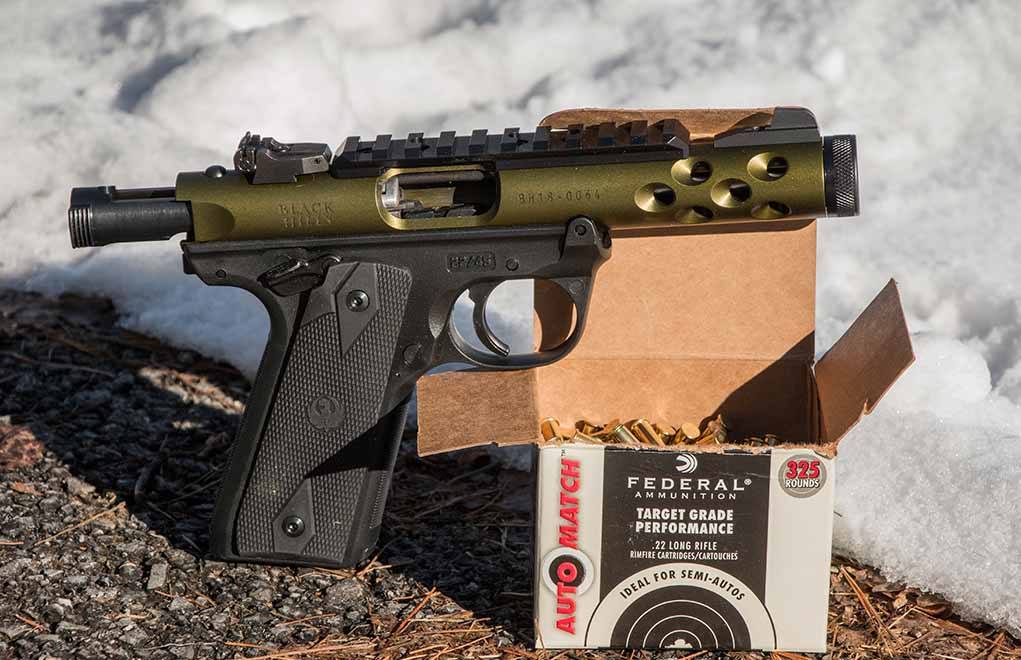
There is. According to Gary Gronfor, one of the smart guys at Federal Ammunition, “Once ammunition has been wet, submerged or in a wet range bag or hunting coat, it becomes unreliable and untrustworthy. Moisture can enter thru the primer pocket, the crimp, the case mouth, or around the head on a shotshell, contaminating the primer and/or the propellant. The result is a bullet or wad in bore [a squib load where the bullet fails to fully exit the barrel] which undetected leads to bulged or blown barrels, other types of gun damage and possible injury to the shooter or bystander. Numerous times every year, we get ammunition and damaged guns and barrels that we are able to determine, that the ammo has been moisture contaminated.
“End-user hunters and target shooters aren’t the only ones who experience moisture contamination,” Gronfor added. “Over the years, we’ve had Law Enforcement Departments and Agencies who dump their training ammo into large buckets to facilitate easier loading for training or qualifications, and normally these sessions are conducted in rain, snow or shine. The buckets hold water and when the ammo isn’t all shot during the session, the range officers forget to empty the water. So, the next day or week when training is continued, suddenly the shooters experience misfires or bloopers or bullets/wads in bore and think they have an ammo issue, never thinking that this is an issue of their own making.”
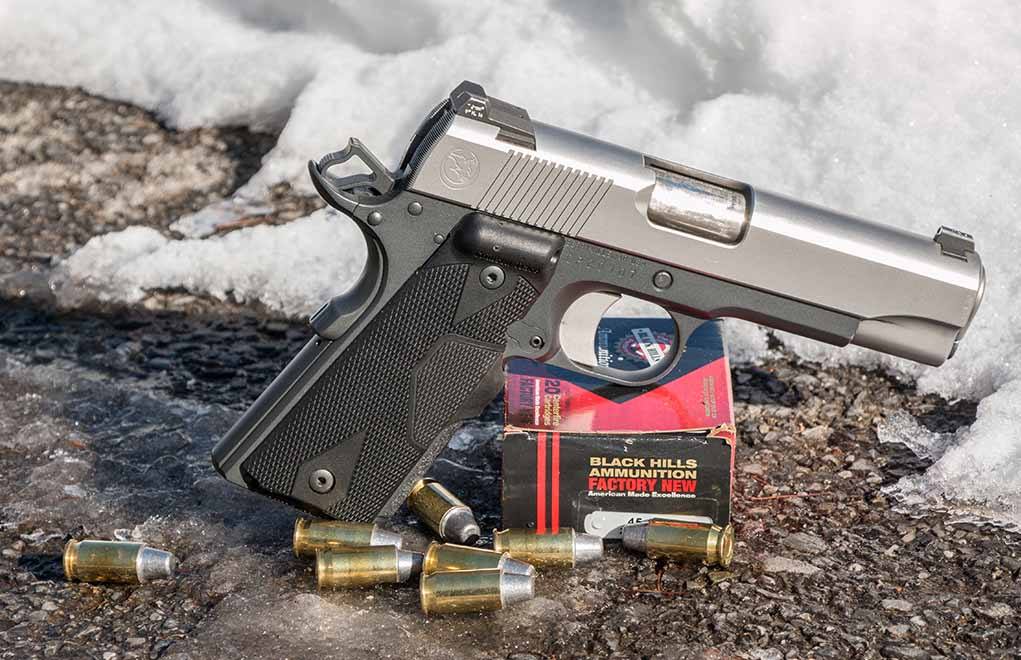
Going forward, I’d feel confident trusting any ammunition that had not been exposed — fully submerged — in water for more than a minute or so. For ammunition that has been underwater for anything longer than a minute, and if I was planning to use it to save my life, I’d replace it. You could regulate any potential water damaged munitions to practice and plinking but should do so with caution; a squib load — undetected — could end your day at the range, your gun, and possibly your fingers and eyesight.
Interestingly, the last words of advice from Gronfor at Federal were, “… one thing hasn’t changed since the invention of black powder: ‘Keep your powder dry’ are words to live by if you own a firearm.”
Here’s a tip of the hat to Mr. Cromwell.
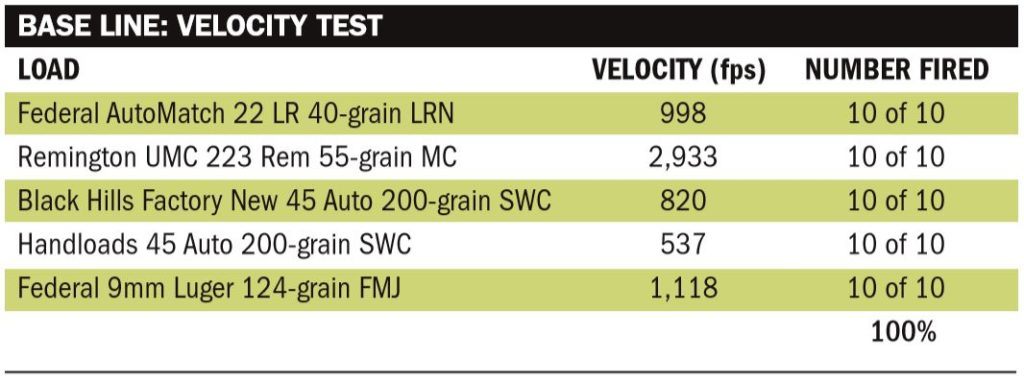


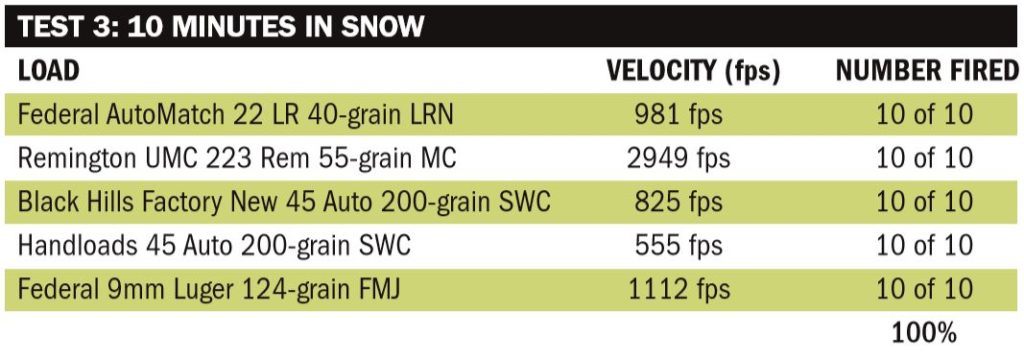
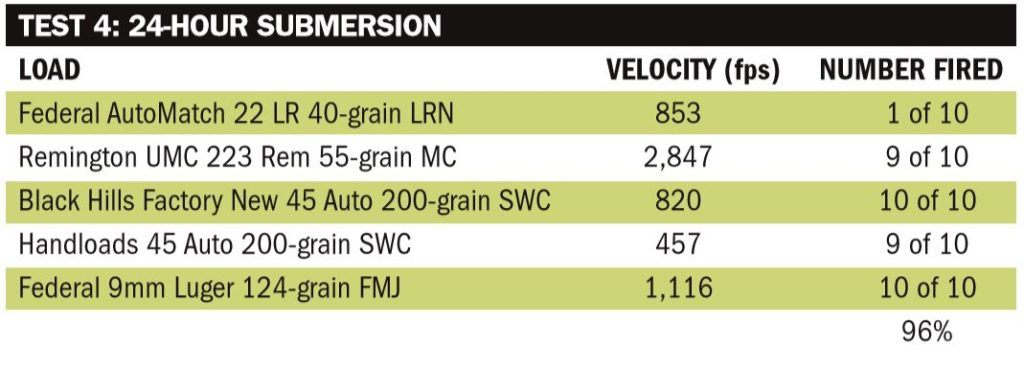

Editor's Note: This article originally appeared in the February 2019 issue of Gun Digest the Magazine.

Next Step: Get your FREE Printable Target Pack
Enhance your shooting precision with our 62 MOA Targets, perfect for rifles and handguns. Crafted in collaboration with Storm Tactical for accuracy and versatility.
Subscribe to the Gun Digest email newsletter and get your downloadable target pack sent straight to your inbox. Stay updated with the latest firearms info in the industry.

![Best Concealed Carry Guns In 2025 [Field Tested] Wilson Combat EDC X9S 1](https://gundigest.com/wp-content/uploads/Wilson-Combat-EDC-X9S-1-324x160.jpg)


![Best 9mm Carbine: Affordable PCCs [Tested] Ruger Carbine Shooting](https://gundigest.com/wp-content/uploads/Ruger-Carbine-Shooting-100x70.jpg)
![Best AR-15: Top Options Available Today [Field Tested] Harrington and Richardson PSA XM177E2 feature](https://gundigest.com/wp-content/uploads/Harrington-and-Richardson-PSA-XM177E2-feature-100x70.jpg)

With hurricane Ian we had 4ft of water for 12 hours in our house. I store my ammo 1ft off the ground in vacuum bags and plastic ammo cans. Even in the vacuum bags I lost over half my ammo to water intrusion. I guess when other item fell on the ammo it damaged the bags. I also had thousands of rounds in the plastic ammo storage boxes, that are supposed to be watertight. Their not, both Plano and bass pro/cables were full to the brim of water.
It is, perhaps, ALL about keeping your powder dry. The primers, not so much. I was always a little concerned over packaging for primers. You know: Little plastic trays in a cardboard cover, not sealed in any way whatsoever, and sitting on a store shelf for who knows how long in varying humidity levels. . . . So, never having had a problem with any primers that I had loaded myself (since 1969), I decided to have a non-scientific experiment. I dropped ten CCI small rifle primers in a cup of water and after letting them sit in that water at room temperature for most of 24 hours I fished one out of the water, pressed it into an empty .223 cartridge case, put it into a rifle and fired it. The primer worked fine. I then did the same again the next day, and every day for nine more days. . . . . . every single primer fired, every single time. My conclusion was that the primers are unlikely to be effected by humidity on a store shelf, no matter HOW LONG they have been waiting for someone to buy them. After reading you article, I think that I can say that moisture isn’t going to have much effect on any primer that is already part of a loaded cartridge. So, if there is a moisture problem, it is only going to be from powder that has become moist. Unfortunately, that also means that, while the primers will still fire – even if the powder doesn’t – then you could end up with a “squib” and possibly a bullet lodged somewhere up in the barrel of the weapon. . . . . that wouldn’t be good. I don’t own a gun that I would be willing to try that experiment on, since there is some likelihood that removing that bullet from the bore might damage the bore. . . . . . the very idea of such possible damage gives me cold sweats. . . . . Has anyone tried tea-bagging some powder and experimenting with possibly damp powder? I can certainly tell you shat most powder doesn’t seem to be particularly effected by moisture (actual water not humidity) although I haven’t tried loading any previously wet (and then dried again at room temperature) powder, but I wouldn’t be surprised to find that many powders aren’t going to be much effected by that either. Maybe for accuracy – changing the burn rate – but not for actual ignition and propulsion of the bullet. Damp powder, would be completely different though, I think. And maybe produce that bullet lodged in the bore problem.